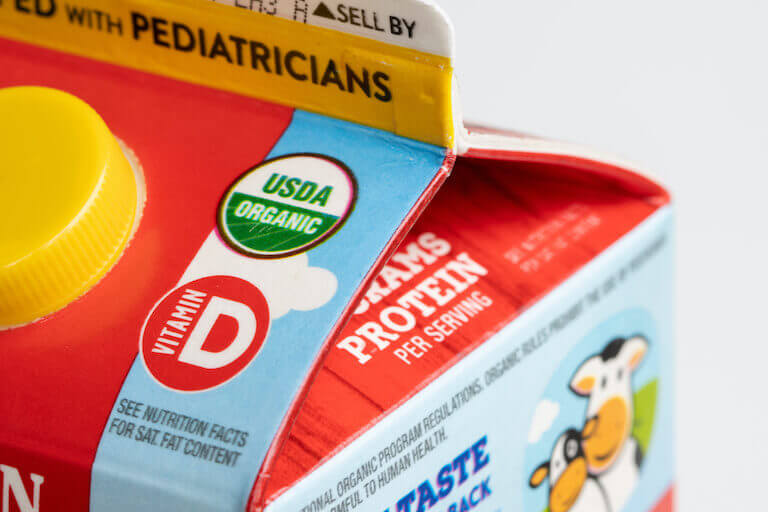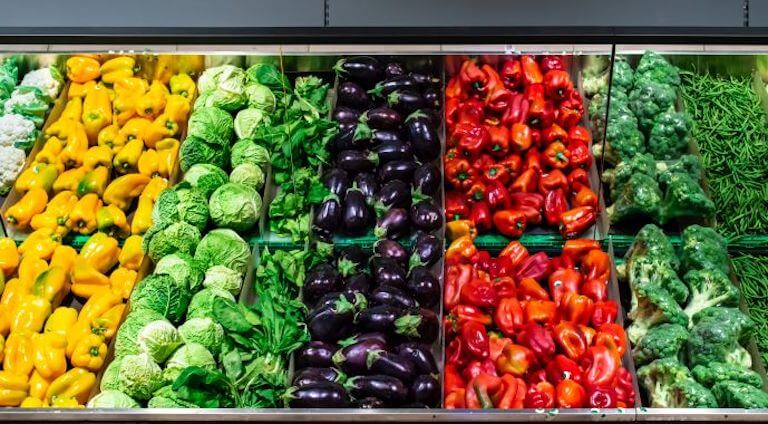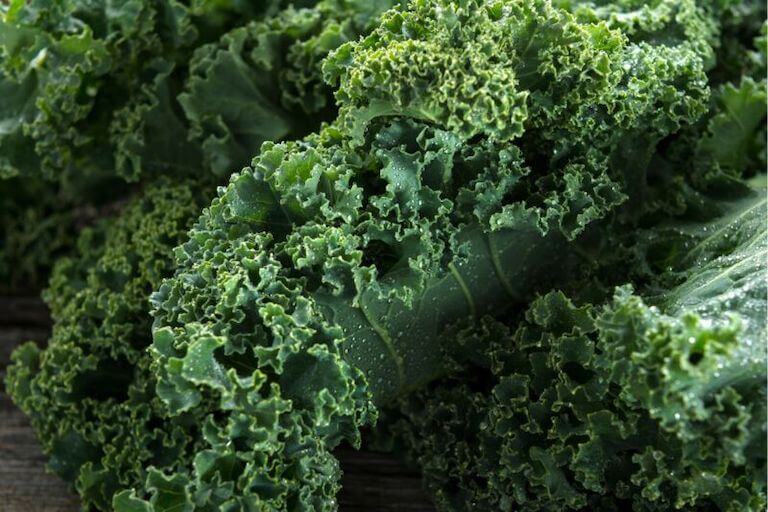Listen to This Article:
If you’ve browsed your grocery store shelves lately, you’ve likely seen products claiming to be full of “superfoods”. From paleo meal bars to açai smoothies and kale chips, food manufacturers can often promote the concept of “food as medicine” and waste no opportunity to let you know that their products are full of special ingredients that may improve your health.
In turn, consumers are reaching for “superfoods” and “functional foods”— unique food products with supposed health benefits — in an attempt to solve health problems before resorting to drugs. The question is, are they really all they’re hyped up to be, and should you be including these special foods in your diet or on your restaurant menu? And if so, what’s the best way to use them?
Functional Foods vs. Superfoods: What Are They and What’s the Difference?
Functional foods are foods or ingredients with health benefits beyond their basic nutrition. Some particularly nutrient-dense whole foods—like wild salmon—are considered functional foods, as are fortified foods like milk or cereal grains with added vitamins and minerals.
“Superfoods” are essentially functional foods that have been recognized in marketing and some research to have specific potential health benefits. The term superfoods is not legally defined, so companies are free to use it however they choose.
Common “Superfoods” You Can Find at the Grocery Store
| Spinach | Salmon | Peanuts |
| Kale | Herring | Almonds |
| Arugula | Mackerel | Pistachios |
| Collard greens | Anchovies | Pecans |
| Swiss chard | Sardines | Brazil nuts |
| Mustard greens | Chickpeas | Walnuts |
| Strawberries | Kidney beans | Brown rice |
| Blueberries | Peas | Quinoa |
| Raspberries | Black beans | Oats |
| Blackberries | Navy beans | Barley |
| Cranberries | Pinto beans | Buckwheat |

Milk and flour products are commonly fortified with extra nutrition, making them functional foods.
Specific Health Benefits of Functional Foods and Superfoods
Even though the marketing around superfoods and functional foods may not be entirely accurate, incorporating these foods into your diet can provide health benefits. Eating more heavily processed food has been shown to lead to many chronic diseases, while a variety of healthy diets have been shown to reduce the risks of health problems, and in some cases even lead to healing.
According to the USDA, an average healthy diet includes a range of foods. These include grass-fed and wild proteins, as well as healthy fats (like extra virgin olive oil), whole grains (e.g., brown rice or quinoa), legumes (beans and lentils), fresh fruits and vegetables, and nuts and seeds. Many of these categories include functional foods.

A rainbow of colorful fruits and vegetables is an important part of a healthy diet.
Due to their high levels of important nutrients, like Omega-3 fatty acids, B-vitamins, or magnesium, including appropriate functional foods and superfoods in your diet may potentially help you reduce your risk of developing health problems, or even improve certain health conditions.
Examples of superfoods in action
Fermented foods like sauerkraut, kombucha, yogurt, and kimchi are full of probiotics (beneficial bacteria), which can increase your healthy digestive bacteria and may aid in gut health.
Omega-3 fatty acids like docosahexaenoic acid (DHA) are commonly found in seafood, seaweed, flax seeds, and walnuts, and can help promote heart and brain health. Green tea may improve blood flow and reduce cholesterol and may have anti-cancer properties.
Beans and whole grains are high in dietary fiber, which may help lower cholesterol and improve your gut health. Inflammation, a common symptom of many chronic conditions, may be kept in check by a diet high in healthy fats from fish, olive oil, and avocados, and antioxidant-rich berries, tomatoes, and leafy greens.

Legumes and grains like lentils, split peas, and buckwheat are high in fiber and can support your health.
So Should I Prioritize Functional Foods?
Given that superfoods and functional foods are so good for you, should you go out of your way to focus on them? Not exactly.
None of these foods are a magic cure for any condition, and eating these foods will not solve health problems overnight. But including them as a regular part of your diet may lead to improvements long term. And not only that, adding them to your menu could make your restaurant an attractive choice to those who are focused on their health. Not to mention the fact that a wide variety of fresh foods can invigorate your menu.
Of course, there’s a lot more involved in choosing a healthy diet for your body than taking a food manufacturer’s word for it. In recent years, some people have become convinced that superfoods alone can cure disease or keep them healthy, potentially leading to disordered eating.
There’s no harm in including superfoods or functional foods of your choosing, but focusing only on functional foods just because they are “supposed to” be good for you may not be a healthy strategy. A better approach is to work on including superfoods in your otherwise healthy diet.

Scallops, microgreens, and colorful vegetables could be considered superfoods for their high levels of nutrients.
Should Your Food Business or Restaurant Focus on Functional Foods and Superfoods?
The ongoing market growth in functional foods indicates consumers, including diners, are interested in including these foods in their diets and improving their health.
Some restaurants are benefiting from this trend by adding more superfoods and functional food ingredients to their menus, like PICNIK in Austin, Texas. Whether this is a good option for you will depend on your restaurant style and clientele. Customers at a diner or burger joint looking for a greasy-spoon experience may not be interested in adding Peruvian camu camu to their sliders — at least not during this particular meal. But guests at a restaurant that highlights fresh, local, or rare ingredients may be more interested in these healthy foods. It may even be a draw that brings them into your restaurant.
If you’d like to welcome diners who are focused on healthy eating, incorporating functional foods and superfoods could be a helpful strategy. To get the most benefit, you would likely want to emphasize your focus on superfoods and functional foods in your marketing and on your menu.

Fresh foods that aren’t overcooked retain their superfood qualities.
7 Ways To Include Functional Foods and Superfoods on Your Menu
There’s really nothing fancy or complicated about including functional foods and superfoods in your menus. It’s mostly a matter of deciding to focus on healthy ingredients and cooking methods.
Here are some tips for focusing on superfoods in your restaurant:
1. Focus on Colorful Fruits and Vegetables
Brightly colored fruits and vegetables, especially red, purple, and yellow ones, contain important phytonutrients that support health. Emphasizing these ingredients in stir-fries, salads, desserts, and more can showcase not only their health benefits but the beauty of colorful produce as well.

A variety of whole plant foods could be considered functional foods.
2. Emphasize Healthy Fats
Healthy fats, including the Omega-3, Omega-6, and Omega-9s, may offer numerous benefits. Incorporate healthy fats by making salad dressings with cold-pressed olive oil instead of certain other options. Offer avocados as a garnish or ingredient. Focus on cold water fatty fish, like salmon or sardines. And get creative with nuts and seeds as garnishes or as a focus as well.
3. Spice and Herb it Up
Spices and herbs are also rich in phytonutrients and micronutrients, and many, like ginger and garlic, have mildly medicinal properties. So have fun with things like curry powder, turmeric, cayenne pepper, cumin, garam masala, and fresh herbs.
4. Incorporate Dark Leafy Greens
Greens like kale, chard, and spinach are rich in vitamins A, E, K, and C, and minerals like calcium, as well as bitter compounds, which support digestive health, and various antioxidant compounds. Offering sauteed greens, a savory massaged kale salad, or incorporating dark leafy greens in salads would be some good options.

Kale is one of the most common foods to be named a superfood. It is rich in vitamins and minerals.
5. Fermented Foods
Fermented foods are created by the action of beneficial Lactobacillus and other bacteria. These bacteria have co-evolved with humans for thousands of years, and have long been a way of keeping the digestive tract healthy. A little goes a long way. Foods like sauerkraut, yogurt, or fermented pickles can provide a sharp, tangy pop of flavor as a garnish to enhance a dish and as a bonus provide digestive benefits.
6. Load Up on Legumes and Whole Grains
Rich in protein, fiber, vitamins, and minerals, whole grains and legumes help lower cholesterol and blood sugar and support healthy digestion. Create menu items focused on rice, millet, or quinoa instead of wheat and bread, and include whole beans in soups, stews, or side dishes.
7. Freshness is Functional
Food has more nutritional value when it’s prepared from fresh ingredients instead of processed foods. Focusing on fresh ingredients and seasonings increases the vitality of your menu items, and makes them more functional.
Be Careful About Making Health Claims
If you choose to promote functional foods at your restaurant, be careful to avoid making specific health claims. For example, you could say that salmon contains Omega-3 fatty acids which are good for your heart, but you wouldn’t want to say that a diet high in Omega-3 fatty acids can prevent a heart attack.
To highlight these benefits, include a label key on your menu, like a heart icon next to dishes with heart-healthy ingredients. And make sure your staff is well-trained on the ingredients of each dish, so they can answer customer questions.

Tomatoes are high in a phytonutrient called lycopene, which may help prevent heart disease.
Preparing Functional Foods and Superfoods to Maintain Their Super-Nutrition
Including functional foods and superfoods is important to get their benefits, but there’s one more important ingredient. How you prepare them affects their impact.
Nutrients can be lost in certain cooking processes, which reduces the benefits of functional foods. For example, pressure cooking in some cases can destroy some of the nutrition in your food, albeit not as much as boiling can. Boiling vegetables and then discarding the water throws away important nutrients. Peeling vegetables like cucumbers and potatoes often removes many of the beneficial vitamins and minerals.
To preserve the nutritional value of your superfoods and functional foods, generally focus on lower-temperature cooking and minimal processing methods.
Are Functional Foods and Superfoods Just Marketing Hype?
Consumer interest in health foods, food-as-medicine, and vegetarian and vegan lifestyles has fueled the multi-billion dollar superfood and functional food industry.
The superfood market for 2024 is estimated to be worth $182 billion, up from $162 billion in 2020, an 11% increase.
To understand the appeal, it helps to consider the healthcare picture in the U.S. According to the CDC, 90% of the U.S.’s annual spending on healthcare is for chronic conditions. Data suggest that many chronic conditions, including obesity, metabolic syndrome, depression, and all-cause mortality, are worsened by consuming a diet high in ultra-processed foods.
Proponents of functional foods and superfoods say that incorporating or prioritizing them in your diet may reduce the risks of these types of diseases and their symptoms. There is data to suggest they’re not wrong.

Food companies promote superfoods on their product labels to encourage health-conscious consumers to choose their products.
For example, turmeric, the nubby orange root commonly used in Indian cuisine, has been shown to reduce certain cardiovascular risk factors. Dark chocolate has been shown to reduce fasting blood sugar levels and LDL cholesterol.
However, claiming that a food has health benefits on a package doesn’t necessarily mean that it’s true or that it will always provide a health benefit.
Given this truth, it’s probably wise to approach such claims with a healthy skepticism. Just because a product contains superfood or functional food ingredients doesn’t mean that it’s right for your body or that it can actually help you solve a health problem.
To get maximum benefit from superfoods or functional foods, eating an overall healthy and balanced diet that supports your health goals is likely most helpful.
Of course, you should always consult your doctor before making any major dietary changes, and get the support of a nutritionist for additional help.
Where to Learn More About Functional Foods
This interest in food as medicine isn’t showing any signs of slowing down! Culinarians who want to stay current with new trends should pay special attention to functional foods and superfoods as they hone their craft in the kitchen.
A culinary education in Holistic Nutrition & Wellness or Plant-Based Culinary Arts, from Auguste Escoffier School of Culinary Arts may help graduates provide functional foods to health-conscious foodies — as well as help them to make smarter food choices in their own lives.
Students at Escoffier who are working toward their associate degree can explore more about food and nutrients in the Science of Nutrition course. This part of the curriculum covers the basic principles of nutrition, including the bioavailability of nutrients, their food sources, and their role in overall health.
To learn more about our degrees and diplomas, contact an advisor today!
IF YOU WANT TO READ MORE ABOUT HOW FOOD CAN AFFECT YOUR HEALTH, TRY THESE ARTICLES NEXT:
- What is a Plant-Based Diet: An Essential Guide
- How Does Food Affect Your Mood?
- Why Chefs Should Care About Culinary Nutrition
This article was originally published on July 9th, 2019, and has been updated.

